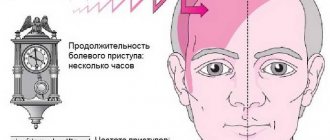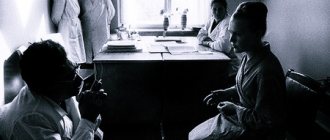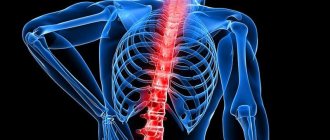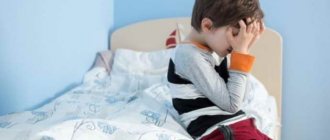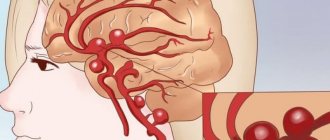Neurosis concept
Neurosis is a long-term psychogenic disorder that is reversible. The term was introduced into use back in the 18th century. In modern official medicine it is not used: it is replaced by a related concept - neurotic disorder.
The causes of neuroses, like any disorders of mental origin, are not fully understood. But most experts agree that the main role in this is played by a stress factor, some kind of traumatic situation. However, what is more important is not the strength or duration of influence of these factors, but the degree of perception and attitude of a person towards them. That is, the internal state of the individual and character traits play a role. For example, traits such as anxiety, suspiciousness, and sentimentality increase the risk of developing the condition.
The famous Russian performer, Irina Dubtsova, was admitted to a psychiatric clinic named after. Solovyova with this diagnosis. The reason for this was the difficult divorce process between her lover and his ex-wife, who annoyed the singer with threatening calls.
Many world psychologists have wondered about the origin of neurotic disorder. Sigmund Freud believed that illness develops when an internal conflict arises between the id and the superego of a person, that is, between her instincts and morality.
Karen Horney suggested that neurosis is a consequence of the conflict between the defensive reactions of the individual. She develops them under the influence of a traumatic factor, such as humiliation, aggression, etc. As a result of this, a person develops several models of attitude towards society: towards, against and away from people - the need for love, power or independence, respectively.
Another cause of the disorder may be a change in the level of neurotransmitters, which makes the human nervous system more vulnerable, or hormonal changes during puberty or menopause.
Symptoms of the disease include the following:
- lability of the emotional background, frequent mood swings;
- sleep problems – insomnia, waking up early or having difficulty waking up in the morning;
- anxiety and fears;
- panic attacks;
- sentimentality, tearfulness, vulnerability;
- increased irritability;
- decreased performance and cognitive-cognitive functions;
- fixation on the traumatic factor;
- light and sound sensitivity;
- increased or decreased appetite;
- pessimism, despair;
- when taking on any task, you stagnate in one place and don’t move anywhere;
- stuttering;
- physiological symptoms - headaches, dizziness, heart pain, digestive disorders, difficulty breathing, etc.
In a state of neurosis, a person maintains a critical attitude towards the symptoms of the disease. There are no psychotic signs in the form of delusions or hallucinations.
Complications of the disease
If vasomotor rhinitis is neglected or treated incorrectly, complications are inevitable. It should be noted that even treatment with folk remedies and methods can harm the body. The only place where they can be used is to eliminate headaches.
Exacerbation of vasomotor rhinitis may be accompanied by the following diseases:
progaymorit.ru
Types of neurotic disorder
All neuroses go through 3 stages . The first of them lasts 1 month and is characterized by acute mental trauma. If its consequences were not noticed in time, then the process develops, certain reactions appear and awareness of one’s “abnormal” state occurs. When the disorder lasts from six months to 2 years, they speak of its second stage.
If the disease is not eradicated in the first two stages, it becomes a chronic disorder with persistent changes in the personality structure.
There are three most common types of neurosis : neurasthenia, obsessive-compulsive neurosis and hysteria.
The main symptoms of neurasthenia are exhaustion and increased fatigue against a background of irritability and hyperexcitability. Other symptoms may also occur: increased sensitivity to bright light, temperature changes, loud conversations. Autonomic disorders also appear: tachycardia, increased sweating, headaches. It is difficult for the patient to concentrate and tune in to any activity.
Hysteria is a type of neurosis that is nicknamed the great malingerer for the variety of its symptoms. The hysterical type of character contributes to its development.
Among the manifestations of the disease are attacks of suffocation, sobbing or laughter. It can masquerade as a hypertensive or cardiac crisis. There is temporary immobility and loss of sensation in the limbs. Neurotic deafness and blindness rarely occur.
Probably the most well-known symptom of the disorder is an attack of hysteria. With it, a person faints, but, surprisingly, very successfully. Convulsive-like seizures may occur. Patients wave their arms, “killed” by suffering, their body bends into an arc. Such an attack is demonstrative in nature. Women are more often susceptible to them.
Despite the depressing, painful symptoms, patients do not strive to get rid of this condition. On the contrary, they skillfully manipulate it. Whenever there are any complaints against them, they refer to their “serious” illness. As a rule, such individuals are demonstrative and self-centered.
Be careful: hysteria can be contagious! This was proven by a case in one of the schools in Tanganyika. The three girls laughed so contagiously that their laughter was echoed by 95 students. The maximum duration of the attack was 16 days. This school was closed, but 14 more schools took up the baton. In total, about a thousand students suffered a hysterical attack. Poor living conditions of the hostel in which they lived and the inability to make a claim are considered a possible cause of hysteria among the girls.
Obsessive-compulsive neurosis is another form of the disease in which certain thoughts, actions, and fears become so intrusive that a person perceives them as painful, they interfere with his usual way of life.
Among the most common phobias are fear of death, fatal disease, heights, confined spaces, and others.
Fears can also provoke obsessive actions. Thus, individuals strive to constantly wash their hands so as not to “catch any infection”, disinfect everything around them, and avoid public places.
Compulsions can also occur on their own. For example, there is an uncontrollable desire to swear or do something illegal.
The famous inventor Nikola Tesla suffered from obsessive-compulsive disorder. His mania reached the point where he could count steps, cups of coffee or pieces of food. He was terrified of germs, which is why in a hotel he demanded that towels be changed up to 18 times a day, and in a restaurant, if a fly landed on the table, he demanded that it be reserved. The hotel room had to be a multiple of three.
Autonomic neurosis
This is a special form of the disease, provoked by a disruption of the autonomic nervous system. As is known, the latter controls the functioning of internal organs and participates in maintaining a normal level of vital activity.
In addition to personality traits, stress factors and overwork, brain injuries, some past infections, and intoxications lead to such a disorder.
A peculiarity of the course of the disease is that its symptoms are similar to those with pathologies of internal organs.
Thus, vascular syndrome manifests itself with surges in blood pressure, increased or decreased heart rate, and headaches.
Changes in the skin in the form of dryness, burning, redness and even the appearance of trophic ulcers are possible.
Autonomic neurosis can manifest itself with the sudden appearance of allergic reactions to previously favorite foods, plants, and usual medications. These may be skin rashes, rhinitis, nosebleeds.
But more often than not, the disease imitates a malfunction of an organ. The following symptoms are possible:
- pain in the heart, palpitations, tachycardia;
- shortness of breath, difficulty breathing, cough;
- difficulty swallowing, constipation, diarrhea;
- frequent urination;
- pain in the neck, back;
- decreased visual acuity.
Such disorders are functional in nature. When examined by specialized specialists (cardiologist, gastroenterologist, pulmonologist), no pathologies are detected. This is an important diagnostic nuance that precedes diagnosis.
Here is a typical example of a neurotic autonomic disorder. The girl received a promotion. There was more work, and we had to work at full capacity. A few months later, she began to suffer from headaches, lethargy and fatigue. With nervous overstrain, it became difficult for her to breathe, she could not take a breath, which caused panic from lack of air. My heart was pounding madly and jumping out of my chest. She underwent all the necessary examinations, but none of them revealed organic pathology.
Vegetoneurosis: causes
There are many reasons for the development of vegetative neurosis, and we will list the main ones:
- Head injuries.
- Labile (that is, weak, unstable) nervous system.
- Infectious diseases occurring in acute or chronic form.
- Violation of sleep patterns, nutrition, overwork, heavy physical labor, chronic stress, mental overload.
- Unfavorable situation in the family or work team.
Thus, vegetoneurosis can be psychosomatic in nature, and therefore a psychotherapist is involved in its treatment.
What is the diagnosis based on?
The diagnosis is made by a neurologist or psychiatrist. The specialist interviews and examines the patient and conducts a psychological examination.
It is very important to exclude somatic diseases when diagnosing neurosis, because many of its symptoms are similar to manifestations of pathologies of internal organs. For this, the patient is prescribed a series of laboratory and instrumental examinations: ultrasound, X-ray, CT, MRI, vascular examination, esophagogastroduodenoscopy (EGD).
After excluding such diseases, differential diagnosis is carried out with other mental illnesses: psychopathy, schizophrenia, manic-depressive disorder. An important assessment criterion is the person’s awareness of his illness and the desire to get rid of it.
How are neuroses treated?
Treatment of neuroses is primarily carried out with the help of psychotherapy . This is the main tool in overcoming the disease, which cannot be replaced even by medications.
But initially, the impact of the psychotraumatic factor should be canceled. This can be done in two ways:
- the first is to eliminate the situation;
- the second - as in the saying: “If you cannot change the situation, then change your attitude towards it.” This is what psychotherapy does.
There are two types of psychotherapeutic methods: primary and auxiliary.
Basic psychotherapy is aimed at eliminating the cause of the disorder. The auxiliary method enhances the effect of the main one and consolidates the result. Psychotherapy using purely auxiliary methods is ineffective. Among psychotherapeutic methods, special attention is paid to cognitive behavioral therapy. It is especially effective in the treatment of obsessive neuroses. A technique is used that provokes the client to have obsessive thoughts or actions. It is believed that in this way a person will get used to them, and they will cease to have a frightening character. In addition, this technique allows you to escape from obsessions.
To eliminate anxiety, behavioral therapy uses methods to help change incorrect attitudes, as well as methods of coping with stressful situations. To get rid of phobias, a person is deliberately immersed in a frightening situation. For example, if he is afraid of public speaking, he is forced to give a lecture or report to a group of people.
Other types of psychotherapy are also used:
- existential;
- Gestalt therapy;
- hypnosis;
- art therapy;
- interpersonal therapy;
- psychoanalysis;
- auto-trainings.
Drug treatment of neurotic disorders reinforces and enhances the positive effect of psychotherapy. The following groups of drugs are used:
- Antidepressants are drugs for normalizing mood and eliminating anxious, depressing symptoms. They can be either chemical or plant based. They are able to stop even deep forms of the disorder;
- tranquilizers - there are several classes of such drugs. Some of them are used to eliminate mild neurotic symptoms, while others fight the most obvious manifestations of the disease. Tranquilizers are prescribed in cases where neurosis is accompanied by fears and anxiety;
- neuroleptics are effective for the hysteroid form of the disorder;
- mild depression can be eliminated with herbal remedies and infusions.
Other groups of drugs used for the treatment of nervous disorders include complexes of vitamins and minerals, adaptogenic agents based on Eleutherococcus, ginseng, Rhodiola rosea, sedative herbal preparations and sleeping pills.
Physiotherapeutic procedures include:
- massage;
- water and mud therapy;
- electrosleep;
- Darsonvalization.
symptomatic therapy becomes an additional treatment method . It eliminates negative signs that arise in a particular organ. Such drugs can be painkillers, as well as drugs that improve digestion, mild heart medications, and “distraction” tablets - Validol.
For help in the treatment of neuroses, you can contact the Moscow City Psychoendocrinological Center.
Features of the disease
A common disease is vasomotor rhinitis. Various studies are constantly being conducted to explain its etiology. Many scientists, specialists and doctors are of the opinion that “vasomotor rhinitis is a false allergic reaction, the cause of which in some cases is vegetative-vascular dystonia.” But, despite this statement, it is still necessary to treat the disease as soon as its first signs begin to appear.
Vasomotor rhinitis is an independent disease characterized by impaired nasal breathing. It is explained by a narrowing of the nasal cavity as a result of swelling and swelling of the soft tissues. Rhinitis can be caused by various allergens.
Most people decide to eliminate vasomotor rhinitis on their own, without the help of a doctor. To do this, they buy nasal drops and think that the problem is solved. The opinion that rhinitis is not a serious illness is erroneous, since inaction will not only aggravate the disease, but will also cause serious complications. Even the manifestation of vasomotor rhinitis in a mild form can negatively affect normal life.
With vasomotor rhinitis, experts note various symptoms. Their differences are that the reasons for the manifestation are different and some signs are not so pronounced. For example, a headache in different forms of rhinitis may be either absent or clearly expressed.
There are several ways to treat vasomotor disease, ranging from drug treatment with various effective means to attending physical therapy courses. Quite often, surgery is the only way to eliminate the disease. But there are people who still treat vasomotor rhinitis with folk remedies.
Neurotic disorder in children
Neuroses in children are quite common, and more often in boys than in girls. Sometimes their manifestations are difficult to mistake for symptoms of a disease. These are obsessive actions such as pulling out hair, picking your nose with your finger, pulling your earlobe, biting your lip, or sucking your fingers. Childhood neurosis can also manifest itself as compulsive counting. The child counts anything: steps, letters, squares of tiles, but he himself cannot give an explanation why he is doing this.
Other neurotic symptoms include:
- nervous tics - the child seems to wink, shrug his shoulders, stutter;
- fear reaching the point of panic. It is especially noticeable before bedtime. This could be the fear of going to bed, being alone, fear of the dark, fear of going to school;
- hysterics with fits and screams occur when the child’s wishes are not fulfilled;
- urinary incontinence.
Children with neuroses are lethargic, have poor appetite, and suffer from insomnia.
The cause of this condition is very often conflicting relationships in the family, especially the divorce of parents. Another group of provoking factors is a stressful situation accompanied by severe fear: a dog has bitten, a child has witnessed an unpleasant situation. The cause may also be fatigue, both mental and physical.
Other causes include past infections, intoxications, and damage to brain cells.
A child psychiatrist treats children's neurotic disorders. The main method of treatment is still psychotherapy. The following types are used: fairy tale therapy, play therapy, hypnosis. Medications are also used. These are mainly nootropic and restorative drugs, vitamin-mineral complexes, and sedative herbal remedies. Tranquilizers and antidepressants are used extremely rarely.
Parents are required to create a warm and friendly atmosphere in the family for their child. The daily routine should be distributed in such a way that there is enough space for both work and rest. It is very important to moderate your child’s presence on the Internet and be sure to involve him in some kind of sport.
Etiology of the disease
Vasomotor rhinitis has been studied for a long time. They were also interested in the doctors of the Ancient world, who were looking for the causes and methods of treating the runny nose with folk remedies. As a result of the research, the main factors of the disease were identified.
Factors causing the disease
It is difficult to immediately diagnose the causes of vasomotor rhinitis. Therefore, there are a number of procedures that can explain the nature of the disease.

